|
Valves
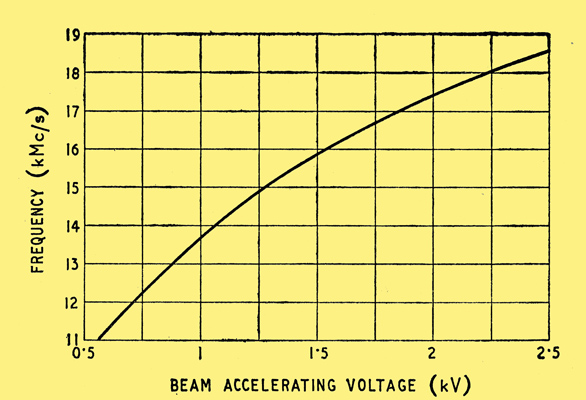
The tuning range of the Mullard carcinotron.
The most unusual valve be seen this year was undoubtedly the backward-wave oscillator or 'carcinotron' shown by Mullard. It is similar in form to the ordinary travelling-wave tube but the RF field energy travels in the opposite direction to the electron beam flow. A characteristic feature is the very wide tuning range, which is obtained simply by varying the electron beam accelerating potential (see graph above). The collector potential is 200 V and the beam current 25 mA, while the power output is 50 mW at 11 GHz or 120 mW at 18 GHz.

English Electric Travelling Wave Tubes N1001 & N1002.
In conventional travelling-wave tubes there were two new types shown by English Electric, the N1001 and N1002. Operating as amplifiers, they both have a gain of 25 dB over the frequency range 1750-2300 MHz, the N1001 giving an output of 20 W and the N1002 an output of 1 mW.
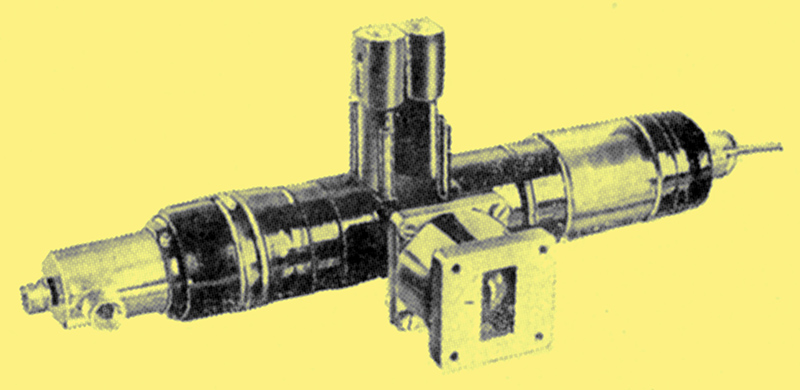
Ferranti 500 W klystron.
Another microwave valve using velocity modulation of the electron beam is the klystron, and on view was a new Ferranti type with the high output power of 500 Watts at 9,400-9,700 MHz. The cathode of this valve is designed to give a very heavy beam current and the power dissipation of the collector, which has to be water-cooled, is 4 kW.
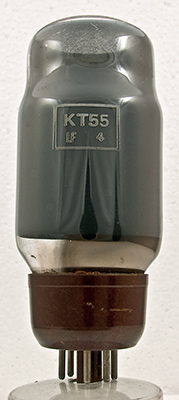
The KT55.
Of particular interest amongst the receiving-type valves on show was the Osram KT55 beam tetrode. This is intended for use as an audio amplifier in AC/DC circuits (the heater rating is 0.3 A, 52 V) and two of the valves connected as pentodes in push-pull will give an output of 25 Watts from a mains supply of 220 Volts. In this pentode condition the KT55 has the high mutual conductance of 16 mA/V.
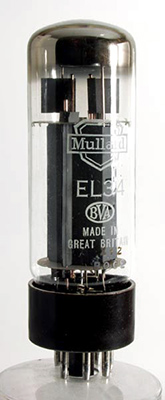
The Mullard EL34.
Another new audio valve for large output powers was the Mullard EL34. It is notable for its high maximum anode voltage of 800 V, which permits operation in push-pull circuits with output powers up to 100 Watts (at 5 per cent distortion). Both the KT55 and the EL34 are on the octal base.
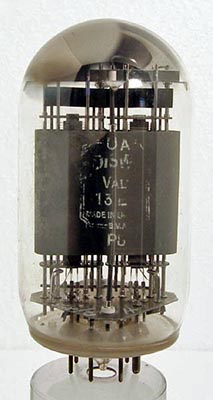
The Ediswan 13E1.
High power and high mutual conductance were also the outstanding features of the new Ediswan beam tetrode 13E1, a DC control valve intended for use in stabilized power supplies or servo control systems. The slope is actually 40 mA/V, while the maximum anode dissipation is 90 Watts.
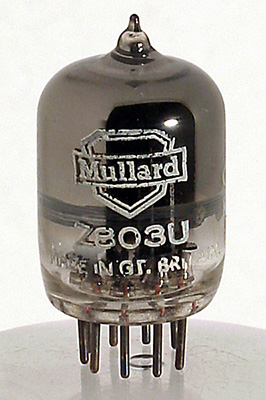
The Mullard Z803U.
Cold cathode triodes, or trigger tubes, for use in electronic switching circuits are still very popular because they are reliable, long-lived and need no heater supplies. Osram were showing one, the CCT6, which can be used in circuits having wide component tolerances, while the Mullard Z803U is notable for the stability of its trigger characteristics.
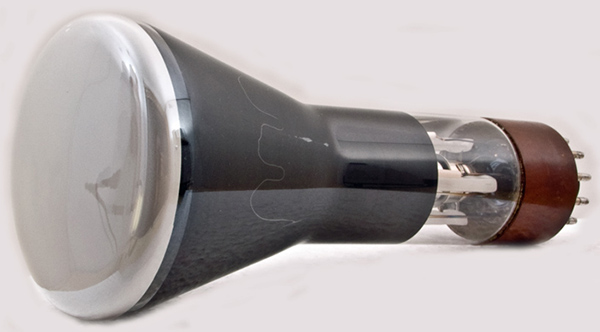
The Mullard DG7-32.
Oscilloscope CRTs were well represented, and an outstanding one for high 'writing' speeds was the 20th Century S6A20-3, which has three post-deflection accelerator electrodes and is capable of recording a 500 MHz sine wave with a time-base speed of 650 cm per microsecond. Mullard were showing two new 3-inch tubes, DG7-32 and -36, the first-mentioned being notable for its low final anode voltage of 500 V.
|